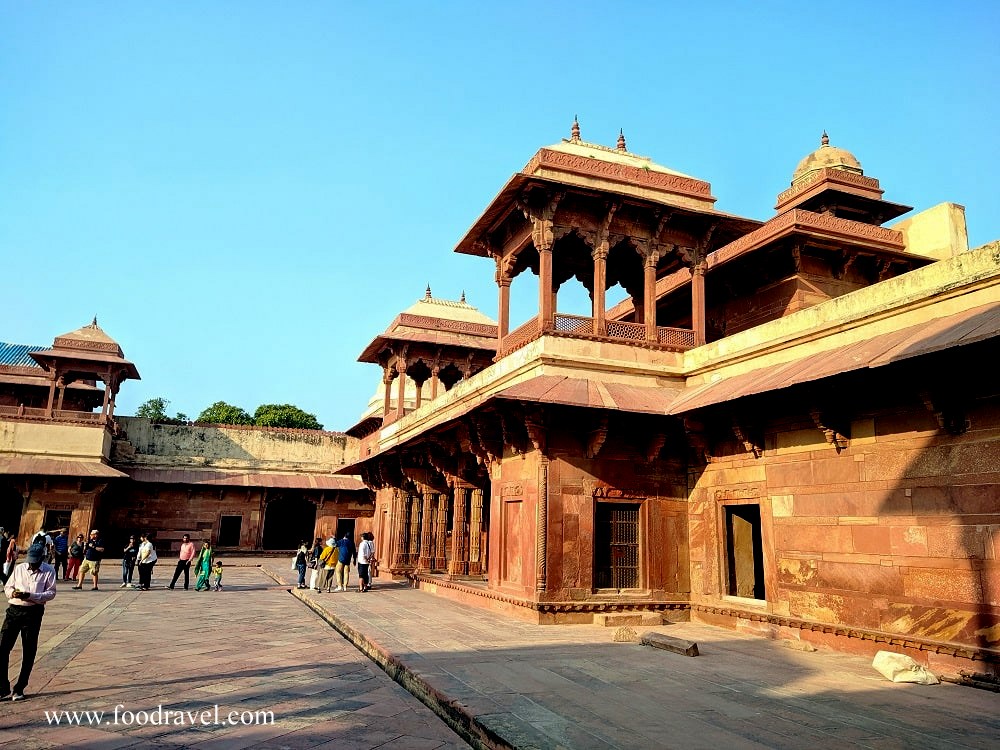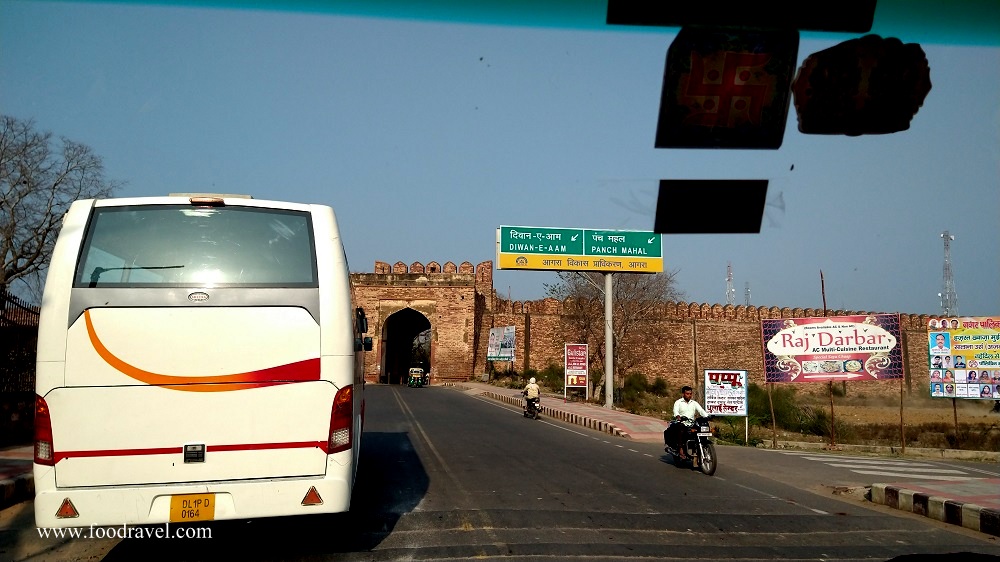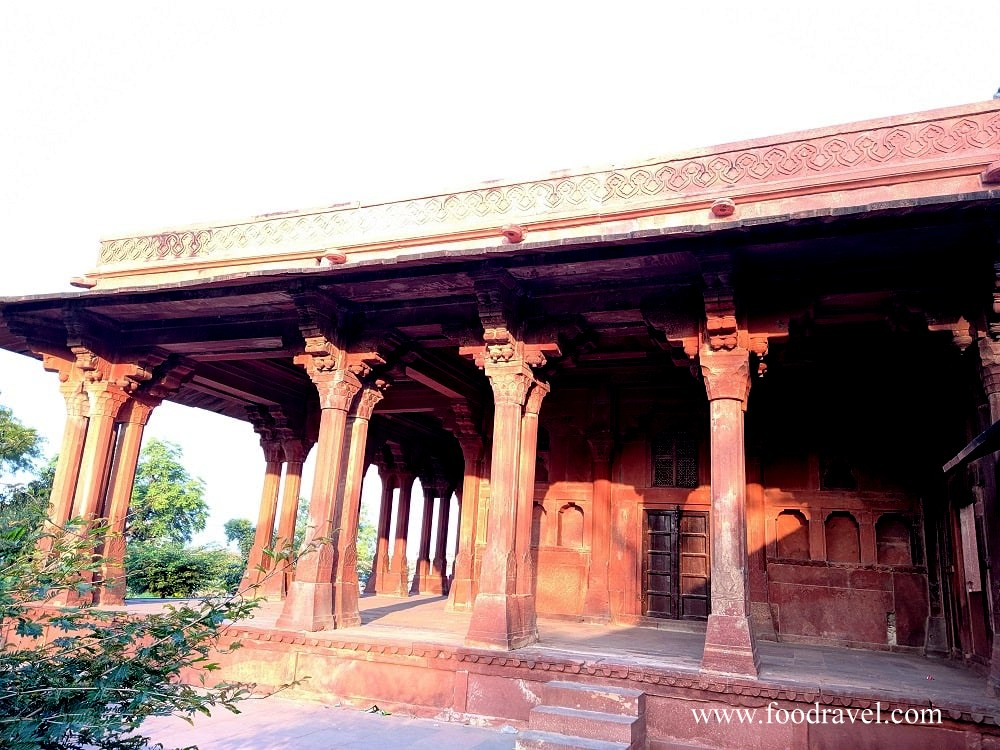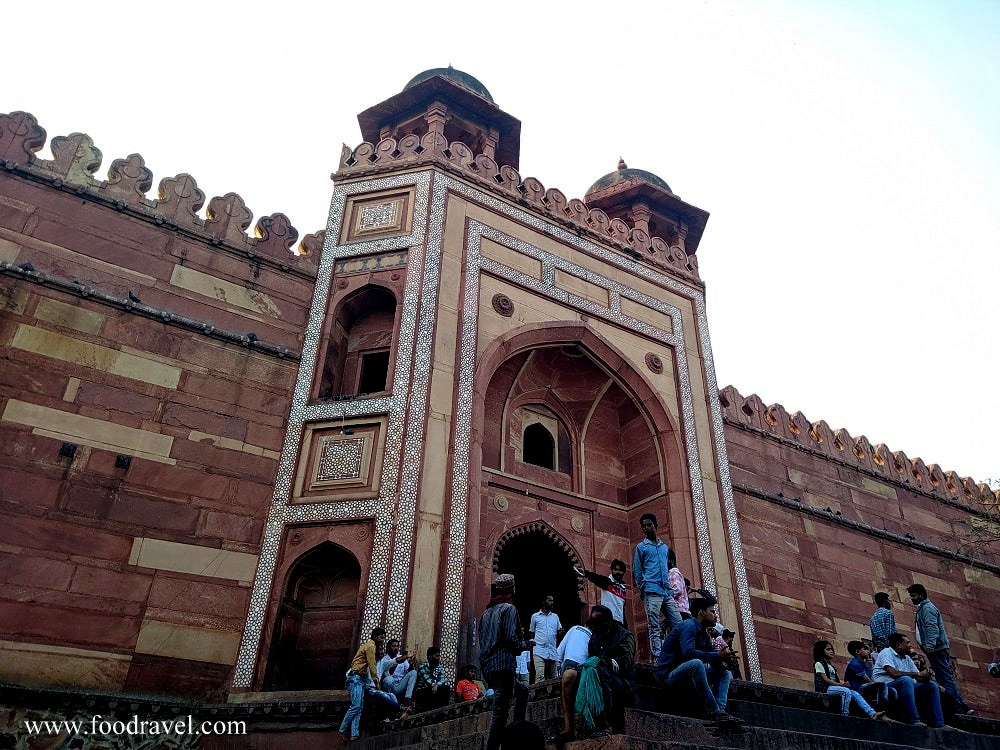When you are planning your Agra itinerary, make sure it’s not just limited to visiting Taj Mahal or Itimad-ud-Daulah’s tomb. The city has so much to offer and there is so much to explore. My love for exploring the city which great historical significance made me visit Agra, not only for once but thrice and it was the third time when I dipped myself in the pool of this city’s history. It was this time only when I got to visit Fatehpur Sikri of Agra, a city that is adorned with majestic monuments and narrates a glorious past.
I visited Fatehpur Sikri of Agra on the last day of my two days’ visit to the city. On the first day, I visited Agra Fort (I visited the fort the second time) and explored some iconic food joints of the city. That’s how the first day was consumed. On the second day, I along with my friend with whom I was touring Agra, visited Taj Mahal in the morning and at the noon after visiting Akbar’s Tomb, headed to Fatehpur Sikri which is located at around 1 hour’s drive from the main city.


Around 40 KM away from Agra city, is located Fatehpur Sikri, Akbar’s city of dreams. Mughal emperor Akbar built Fatehpur Sikri as his capital and thus he commissioned the construction of several grand monuments, fortresses, etc. It was this place only where from he went to win Gujarat in 1573. After he got the victory, he returned there and it was named Fatehpur (Fateh means victory and pur means city). That’s how this place was named Fatehpur Sikri.
A visit to Fatehpur Sikri will take you back to the times when the emperor used to rule here. The monuments inside Fatehpur Sikri are well maintained to give the same look as they were centuries before though at some places, the monuments are damaged and weathered. At places, people have made the walls of monuments love letters which is seriously pathetic. I mean seriously…
Fatehpur Sikri is a major tourist attraction in Agra, especially when someone is planning to spend more than one day in the city.


What to do at Fatehpur Sikri?
Fatehpur Sikri is famous for several things. From Buland Darwaza to Jodha Mahal, this place will consume one day easily. Check below the list of the places to visit
- – Buland Darwaza
- – Jama Masjid
- – Tomb of Salim Chishti
- – Diwan-e-Khas
- – Diwan-e-Aam
- – Ibadat Khana
- – Anup Talao
- – Mariam-uz-Zamani’s Palace
- – Panch Mahal
- – Naubat Khana
- – Birbal’s House
- – Hiran Minar
History of Fatepur Sikri Agra
As per the archaeological proofs, the site is said to belong to the Painted Grey Ware age. As per Syed Ali Nadeem Rezavi, a historian, the city is said to be ruled by the Sunga dynasty and then by Sikarwar Rajputs for a short time in the 12th century. They constructed a fortress here. After then, Delhi Sultanate ruled over it and then was by the Khalji dynasty. ASI did an excavation at Fatehpur Sikri which revealed that the location was more than 1000 years old. Before Akbar, Babur and Humayun had already redesigned the city’s layout. A scholar of Islamic architecture and landscape professor at Polytechnic University of Bari, Italy, Attilio Petruccioli said that Babur and his successors planned to escape from the chaos of Agra and built gardens around Yamuna’s left bank. Babur loved the place and named it Shukri which meant Thanks. He also built the Garden of Victory when he defeated Rana Sanga.
It was the year 1571 when Fatehpur Sikri of Agra was founded. When Akbar proceeded for a battle to Punjab, this city was left abandoned. By 1610, the city was entirely left empty. Some say it was due to water supply problems. However, some say it was just an idea he had and he built the city. An English merchant and a traveler from London has mentioned that
Fatepore Sikri and Agra are two very great cities, either of them much greater than London, and very populous. Between Agra and Fatehpur are 12 miles and all the way is a market of victuals and other things, as full as though a man were still in a town, and so many people as if a man were in a market.
Jahangir is said to have stayed here at Fatehpur Sikri of Agra in 1619 during the Bubonic plague. Muhammad Shah (fourth son of Bahadur Shah I) spent some time here and carried out restoration work. Though after the fall of the Mughal reign, the condition of the city started to degrade. The Britishers made Fatehpur Sikri of Agra their administrative center until 1850. The Marquess of Hastings carried out repairs of the monuments, both at Sikandra and Fatehpur Sikri.



Architecture of Fatehpur Sikri
Sikri is based on a rocky area that measures 1KM wide and 3KM long. The plan looks similar to a rhombus. It is said that the city was chiefly built for luxury and leisure purposes. The main architecture of Fatehpur Sikri was planned on Timurid styles and forms. The main construction material used is red sandstone. The monuments and structures are a fine composition of both Hindu and Muslim architectural styles.

The city is surrounded by a defensive wall measuring around 6 KM in length. There are many entry gates on three sides and an artificial lake on the fourth border. The gates are Lal Gate, Ajmeri Gate, Delhi Gate, Agra Gate, Gwalior Gate, etc. Akbar built several structures including Buland Darwaza and three palaces for his three wives who were his favorites. Along with Indo-Islamic architecture, some structures also reflect Persian style. Eustace Alfred Reynolds stated that,
Here we see the impress of Akbar’s architectural genius, as if fresh from the builder’s hands.
Fatehpur Sikri of Agra is a UNESCO World Heritage Site which was declared in 1986.
Fatehpur Sikri is an add-on to Agra’s itinerary. People who come to visit Agra, also plan to visit Fatehpur Sikri however that’s not possible in just one day. One needs at least two to three days to completely visit Agra along with Sikandra and Fatehpur Sikri.
![]()

